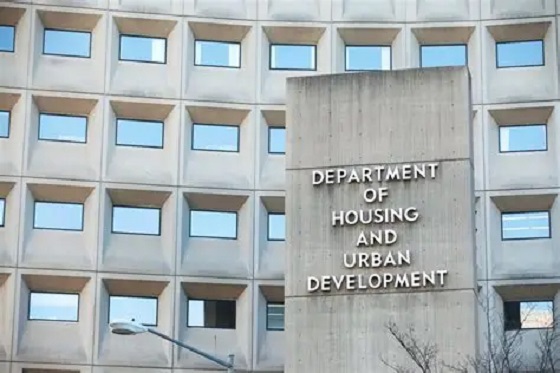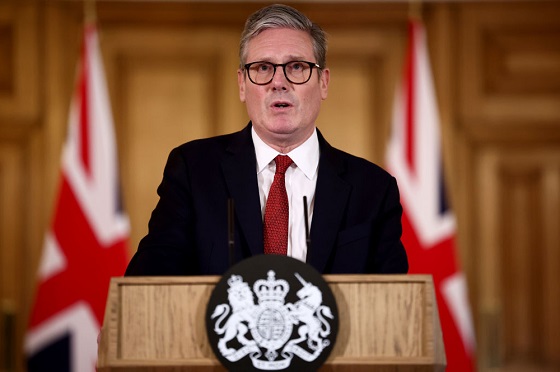Daily Caller
Trump’s ‘Massively Ambitious’ Nuclear Power Goals Might Save US From Rolling Blackouts


From the Daily Caller News Foundation
By Audrey Streb
While the Trump administration has been sounding the alarm over an imminent national energy crisis, it has also set aggressive nuclear expansion goals that industry insiders told the Daily Caller News Foundation may be achievable despite their ambitious scale.
The Trump administration has set a goal to quadruple nuclear power in the U.S. by 2050 and has moved to boost the energy technology through a smattering of executive actions. Though not every nuclear target outlined by the administration may be met, Trump has signaled that the U.S. could dramatically expand nuclear power in the coming years which is vital as blackouts loom and the artificial intelligence (AI) race accelerates, industry insiders told the DCNF.
“It’s going to be tough, but America has stepped up to plenty of major challenges like this in the past,” Benjamin Reinke, senior vice president of nuclear company X Energy and former executive director of the Office of Strategic Planning in the Department of Energy (DOE) under Trump’s first administration, told the DCNF. “Renewed focus on energy reliability certainly is a tailwind for the nuclear sector because of the attributes of advanced nuclear power. The opportunity to capture and win the global AI race with China is something that the U.S. has [to do].”
Dear Readers:
As a nonprofit, we are dependent on the generosity of our readers.
Please consider making a small donation of any amount here.
Thank you!
President Donald Trump signed four May 23 executive orders to clear hurdles for nuclear energy and set ambitious goals to expand the industry. Several nuclear energy sector insiders that spoke with the DCNF are gambling that America will be able to accomplish several of the goals outlined by the Trump administration, even if they are hesitant to believe that power generated from nuclear power could quadruple as soon as 2050.
Several energy insiders warned that it is vital to expand nuclear power now as it is a highly reliable energy resource, and widespread rolling blackouts are being forecasted by several analyses including one July report by the DOE that states blackouts could increase by a factor of 100 by 2030. Power demand is surging for the first time in decades and electricity consumption is projected to surpass the all-time 2024 high, according to the Energy Information Administration (EIA).
As the sector continues to boom, the industry will bring new jobs, technological innovations and power-hungry data centers. Nuclear advocates argue that the energy resource is well equipped to do the heavy lifting for the U.S. power grid.
Nuclear power plant generation has been declining in the U.S. since the 1990s and America has only managed to build two large nuclear reactors in the last 20 years. The newest reactors came online in Georgia nearly two decades after the projects began, running billions over budget and years behind schedule.
Big Tech is looking to nuclear as an attractive option to power its data centers and has considered adding small modular reactors (SMRs) as well as reviving shuddered nuclear plants to solve their power problems. Several states are seeing a revival in nuclear technology, with Microsoft making a deal to resurrect Three Mile Island in Pennsylvania and New York moving to open a new reactor after shuddering one just a few years ago. Additionally, the Michigan Palisades plant scheduled to reopen in October will mark the first defunct nuclear plant to return from the dead.
“Unlocking nuclear energy will be critical for meeting growing demand for affordable, reliable baseload power needed to fuel the AI race – our next Manhattan Project – while powering Americans’ homes and businesses,” a DOE spokesperson told the DCNF. “Thanks to President Trump’s
Reinke noted that Trump’s policies during his first administration started to breathe life into the nuclear sector, and former President Joe Biden also moved to forward nuclear technology through signing the ADVANCE Act. However, Biden’s energy policy focus centered around pushing for wind and solar projects, which some energy experts, grid operators and grid watchdogs have argued primed America’s power grid for outages.
“Energy security is national security,” Reinke said, echoing the phrase that Trump’s DOE repeated during the president’s first administration and is yet again a common slogan among cabinet members in the energy space.
“Folks are going to be without power,” Chief Development Officer of the Nuclear Company Juliann Edwards told the DCNF, referencing DOE’s July report. “By 2030 we’re going to start to see massive deficits in various parts of the United States. … The role nuclear plays is [that] it balances that baseload energy, so you have less volatility on the lines.”
The Nuclear Company is partnering with Palantir to boost nuclear development and is looking to develop its first fleet of reactor sites by the mid 2030s. Edwards noted that the Trump administration opening up federal lands for nuclear development “was huge because it opens up a lot of opportunities that didn’t exist before.”
DOE announced its initial selections for a nuclear reactor pilot program in line with one of Trump’s executive orders aimed at advancing 11 projects on Aug. 12. Among the selections was the nuclear company that designs and deploys reactors known as Oklo, the only selection chosen for more than one nuclear project.
Communications manager at Oklo, Paul Day, told the DCNF that Trump’s nuclear goals are “massively ambitious,” though they mirror America’s power needs.
“But I think it’s almost like a manifestation — we need this power. How are we going to get it? If we put our heads to the grind, we can actually get nuclear to do this,” Day told the DCNF. “Whether we can quadruple nuclear capacity by 2050, well, that remains to be seen. But there is an enormous amount of dead wood being cleared out here for the nuclear industry, and I think that will take us … in the right direction.”
Head of communications at Oklo Bonita Chester emphasized that the Trump administration has translated its nuclear ambitions into actionable steps that look promising to those in the industry. The Trump administration wants to have three reactors go critical by July 4, 2026, which is “highly ambitious, but what I’ve appreciated about this administration is they have been able to back a lot of these really quite dramatic plans with actual actions,” Chester said.
Chester added that fuel remains to be a huge hurdle for the nuclear industry. Advanced reactors need particular kinds of fuel, and Chester listed enriched uranium, recycled nuclear fuel waste and plutonium as viable options. Currently, the U.S. cannot supply enough fuel to power the influx of nuclear reactors, Chester added.
During his presidency, Biden designated nearly 1 million acres in Arizona outside the Grand Canyon as a monument, which shut down potential uranium development in the resource-rich area. The U.S. is a net importer of uranium and has been since 1992, according to EIA data. Canada and Kazakhstan are the biggest uranium suppliers to the U.S., according to EIA.
One of Trump’s executive orders included calling for the conversion of surplus plutonium to allow the private sector to use it, which has “never been considered before, and it’s incredible,” Chester said.
Changes at the Nuclear Regulatory Commission (NRC) are also a good sign for the sector, as Trump limited the wait time for permits to 18 months.
“We’ve never seen the NRC being so vocal about this stuff,” Chester said, noting that the NRC has been very public about reviewing projects ahead of schedule. Energy policy experts previously explained to the DCNF that permitting delays presented a major obstacle for the nuclear industry.
Notably, Chester told the DCNF that fast reactors have been commercialized in China and Russia, yet not in the U.S. where they were invented.
“We would be failing if we were just trying to turn on one reactor,” Chester said. “The goal is to commercialize our technology.”
Daily Caller
Trump Team Floated Energy Incentives With Russia In ‘Sideline’ Ukraine Peace Talks


From the Daily Caller News Foundation
The U.S. reportedly attempted to entice Russia to make peace in Ukraine with numerous energy deals involving potential U.S. investment, sources told Reuters this week.
The discussed deals included the possibility of U.S. oil and gas company Exxon Mobil re-entering the Sakhalin-1 project, as well as the Kremlin purchasing U.S. equipment for its liquefied natural gas (LNG) projects, five sources familiar with the talks told Reuters. Since the beginning of the Ukraine war in 2022, Russia has been largely cut off from striking any major deals with the West.
The talks were held between U.S. Special Envoy Steve Witkoff, Russian President Vladimir Putin and his investment envoy Kirill Dmitriev during the envoy’s visit to Moscow in early August, according to Reuters.
Dear Readers:
As a nonprofit, we are dependent on the generosity of our readers.
Please consider making a small donation of any amount here.
Thank you!
The idea of the U.S. purchasing Russian nuclear-powered icebreakers was also floated as a possible deal, according to Reuters, and was briefly discussed during the Anchorage summit on August 15. Sakhalin-1 is an oil and gas extraction operation on Russia’s Sakhalin Island in the Pacific
Putin opened the project’s doors to foreign investment after the Anchorage summit, which would allow Exxon to potentially profit from the lucrative deal while further developing the operation’s production.
Trump’s negotiations between Russia and Ukraine have so far not produced any ceasefire or peace deal, while the President’s frustrations with Putin have continued to grow amid the relative silence since the two held their high-profile summit in Anchorage. Trump has previously threatened sanctions and tariffs against Russia if it continues to refuse coming to the peace table, but Moscow has so far remained defiant.
“President Trump and his national security team continue to engage with Russian and Ukrainian officials towards a bilateral meeting to stop the killing and end the war,” a senior White House official told the Daily Caller News Foundation. “As many world leaders have stated, this war would have never happened if President Trump was in office. It is not in the national interest to further negotiate these issues publicly.”
Exxon Mobil declined to comment, while the State Department deferred to the White House when asked for comment.
Daily Caller
HUD Secretary Says Illegals May No Longer ‘Live In Taxpayer-Funded Housing’


From the Daily Caller News Foundation
By Hailey Gomez
U.S. Department of Housing and Urban Development (HUD) Secretary Scott Turner said Friday on Fox News’ “Jesse Watters Primetime” that illegal immigrants may no longer “live in taxpayer-funded housing.”
In March, Turner and Department of Homeland Security Secretary Kristi Noem announced the “American Housing Programs for American Citizens,” ending “the wasteful misappropriation of taxpayer dollars to benefit illegal aliens instead of American citizens.” Discussing how HUD plans to prevent illegal migrants from living in public housing, Turner said the department has already issued a letter to the D.C. Housing Authority requesting its full list of residents and those without U.S. citizenship.
“President Trump is serious not only in cleaning up the crime in our streets, but also American citizens will be prioritized when it comes to living in HUD-funded, government-funded housing,” Turner said. “We just sent out a letter to the D.C. Housing Authority, and it has been received by them. And, as you said, they have 30 days to give us a full, comprehensive account of everyone living inside of D.C. housing that are receiving Section 8 vouchers or any type of HUD funding.”
Dear Readers:
As a nonprofit, we are dependent on the generosity of our readers.
Please consider making a small donation of any amount here.
Thank you!
WATCH:
“We want the names, the address, the number of people in the unit, the size of the unit, the cost of the unit. And they must give us their American citizenship status or eligible immigration status. No longer will we allow illegal aliens to live in taxpayer-funded housing here in America. In the last administration, in the Biden administration, they turned a blind eye. They didn’t collect the data,” Turner added. “But those days are over. We are collecting the data to make sure they’re illegal aliens. And for that criminal activity, no one doing criminal activity is living in HUD-funded housing, which is literally on the backs of taxpayers in America.”
Under the Biden administration, the border crisis became a major issue for the president as officials estimated a total of 10.8 million encounters with illegal migrants since fiscal year 2021. With a massive influx of illegal immigrants coming into the United States, Democrat mayors of sanctuary cities like Denver and New York City eventually asked the administration for funding to address the issue in 2023.
By 2024, reports indicated that due to the surge of illegal immigrants, the U.S. had an estimated shortage of 4 million to 7 million housing units, with developers struggling to keep up with the demand for homes. In addition to housing concerns, rent in 2024 saw an increase of 20.9% since 2021, which had already risen due to inflation under Biden.
According to data from the Center for Immigration Studies, an estimated 59% of illegal immigrant households use one or more welfare programs, which costs taxpayers an estimated $42 billion.
-

 Censorship Industrial Complex1 day ago
Censorship Industrial Complex1 day agoUK mother imprisoned over tweet says she was ‘political prisoner’ of Keir Starmer
-

 C2C Journal1 day ago
C2C Journal1 day agoHow Canada Lost its Way on Freedom of Speech
-

 Artificial Intelligence2 days ago
Artificial Intelligence2 days agoParents sue OpenAI, claim ChatGPT acted as teen’s “suicide coach”
-

 Business2 days ago
Business2 days agoU.S. rejection of climate-alarmed worldview has massive implications for Canada
-

 Daily Caller1 day ago
Daily Caller1 day agoTrump Team Floated Energy Incentives With Russia In ‘Sideline’ Ukraine Peace Talks
-

 Alberta1 day ago
Alberta1 day agoSmith government should create stricter rules for Heritage Fund to ensure annual deposits
-

 Fraser Institute1 day ago
Fraser Institute1 day agoB.C. Aboriginal agreements empower soft tyranny of legal incoherence
-

 Housing1 day ago
Housing1 day agoGovernment, not greed, is behind Canada’s housing problem






